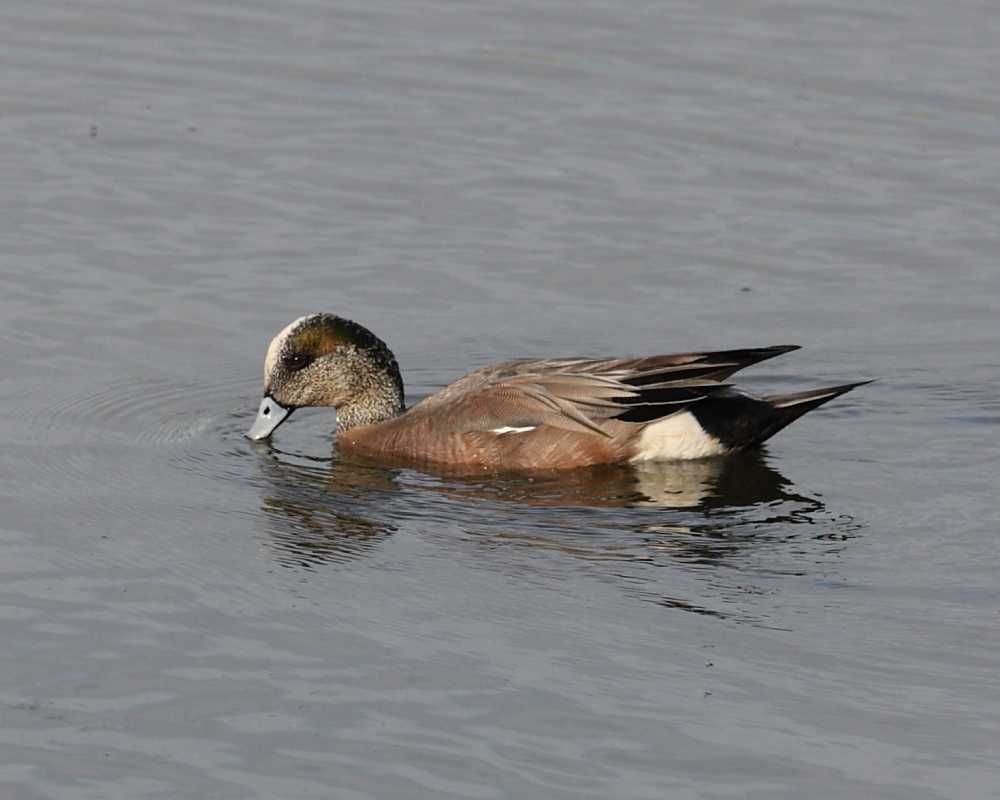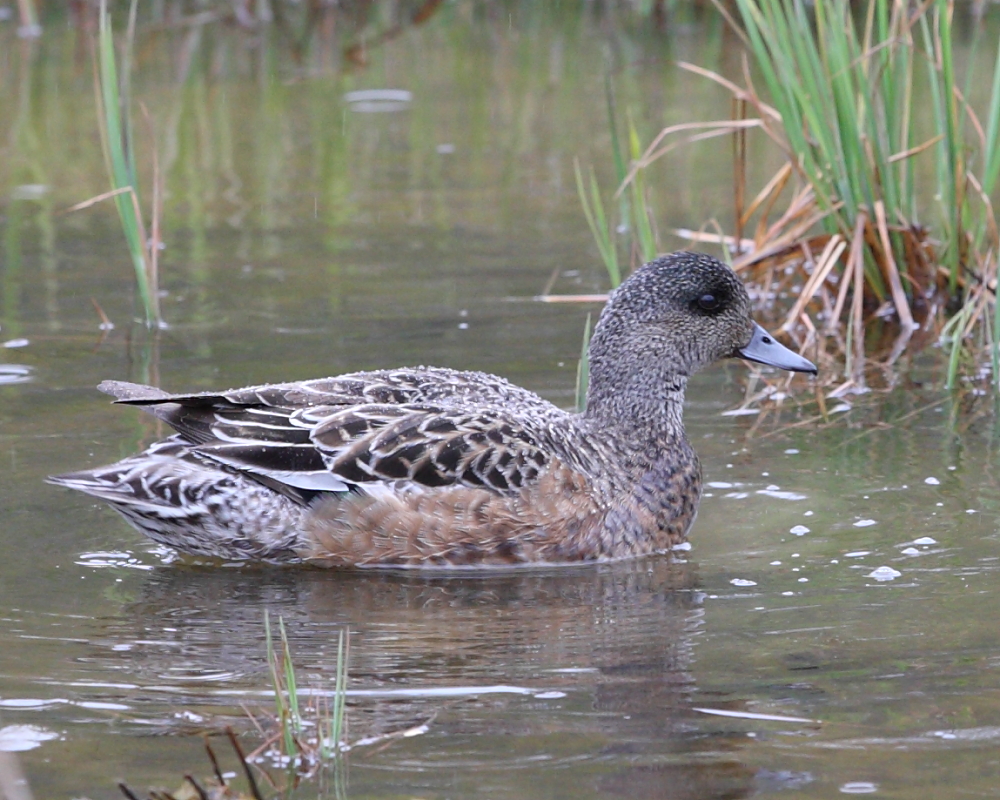Blagdon Lake Birds
American Wigeon Mareca americana (Gmelin, 1789)
(Extremely rare Nearctic vagrant)

- One, drake, not aged, 27th Jan. to 5th Feb. 1946 (B.J. King, H.H. Davis, R.E. Alley, H.J. Boyd).
American Wigeon is one of the most numerous dabbling ducks in North America, with a population of about three million at the end of the 20th century. It is highly migratory, wintering in the USA, Central and South America and is a rare, but regular, visitor to Europe. The greatest number of new birds found on 'this side of the pond' occurs in October and November, but there is also a pronounced passage in spring.
There has only been one record of American Wigeon, or Baldpate, at the lake. Bernard King found a male on 27th January that stayed until 5th February, 1946. On 2nd March what was undoubtedly the same bird was noted at Cheddar Reservoir. What was likely to have been the same bird, given the species' site fidelity, returned to Cheddar the following winter but was not, alas, observed at Blagdon on that occasion.
As the British Birds Rarities Committee no longer considers records of American Wigeon (since 1st January 2002) due to its regular occurrence, it is surprising that there have been no further instances of this species at Blagdon in the last fifty years. Identification of female and hybrid American Wigeon has been well documented (e.g. Brit. Birds 96: 2) and improved observer awareness has contributed to increased records in Britain.

The distribution of wintering Eurasian Wigeon is highly dependant on water level. If the level is over about 80% then the majority of the birds will be found at the dam end, feeding along Butcombe Bank, the dam, or, at Cheddar Water. If the level remains low through the winter, then birds will be widely spread around the lake, including at Top End. On occasions when the lake freezes for short periods they will often fly out to feed on surrounding farmland. Provided that Wigeon continue to winter at the lake, surely it is but a matter of time before another American is found, but you'll need to check through the flock carefully.
Bibliography (sources of information):
- Blathwayt, Rev F.L. (ed.). Report on Somerset Birds, 1946. Somersetshire Archaeol. & Nat. Hist. Soc.